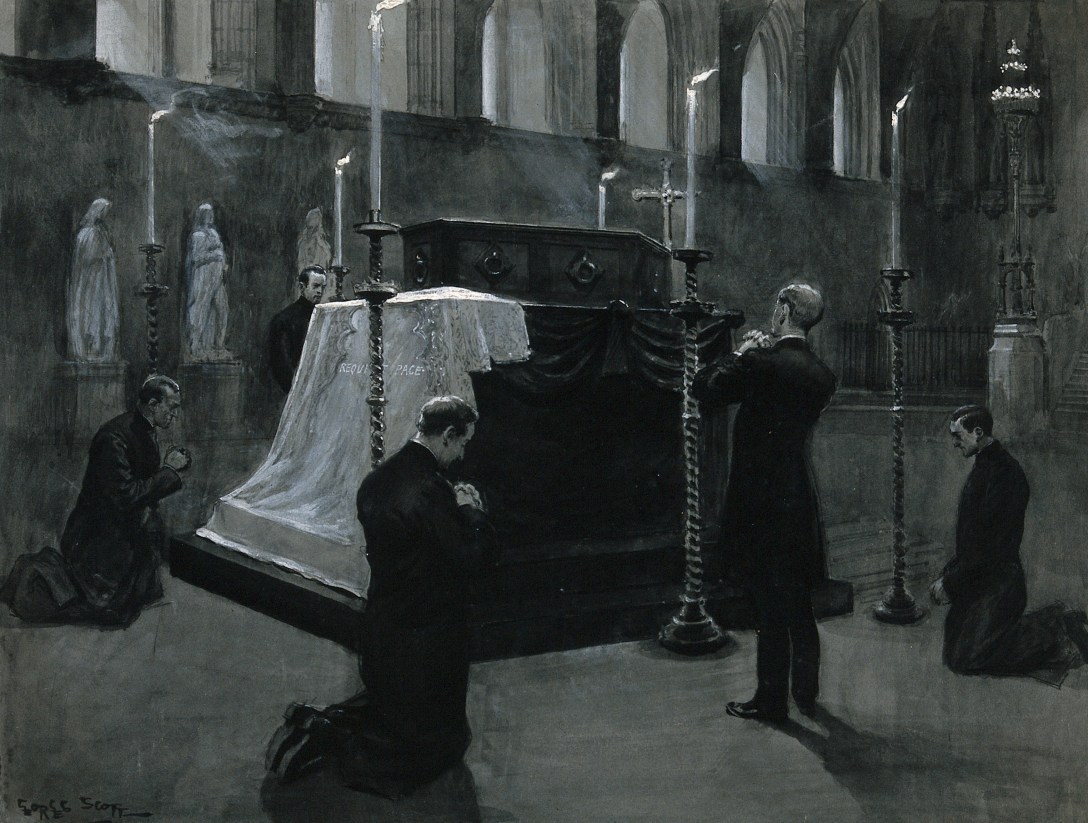
Adapted from : Hysterical Paralysis and premature burial: A medieval Persian case, fear and fascination in the west, and modern practice.
By Paul S Agutter et al Journal of Forensic and Legal Medicine April 2013
The fear of premature burial is ancient but reached its heights in 18th and 19th century Europe. The fear has a modern equivalent, the fear of organs being harvested from a living patient. The certainty of a diagnosis of death are of medical and public concern. The diagnosis of brain death remains controversial. Although multimodality evoked potentials are considered the most accurate way of determining irreversible brain death, doubts remain as to whether any test of brain death can be infallible.
Public fascination remains widespread. Past cases occasionally surface, it is a fear that pervades literature and film, and various means of prevention have been mooted. Some cases involve hysterical paralysis and this article discusses a case of this which arose in Qajarid Persia.
A family of tobacco farmers had a 14 year old girl. The mother went to waken her daughter to get her ready for a day of work on the farm. As she didn’t want to do this the girl refused but her mother forced her out of bed. Immediately, the girl fell back on the bed and remained motionless. Thinking that her daughter had stopped breathing, the mother started to shout and cry. Other household members came into the bedroom and were also convinced that the girl had no breath or pulse. Partly due to poverty and partly due to the difficulty in obtaining a doctor, the family considered the girl to be dead and arranged the burial.
The girl’s body was washed and anointed as was the custom. A wise old woman observed that there appeared to be some movement of the girls head and hand and urged the family to wait overnight to see if recovery would occur. She was overruled and the girl was buried.
The old woman did manage to convince the girl’s brother, so shortly after burial, he exhumed the body. He found her motionless and reburied her.
The next morning a neighbour came to the house saying that he had been disturbed by a dream that indicated that the girl was alive. After a lot of dispute, the grave was eventually opened up again in the afternoon.
This time, the girl was indeed dead, but she had changed her position, was now lying curled up on her front, and had banged her head on the stone covering the grave when she had tried to untie her shoe ties. A lot of blood had come from the head wound. A tragedy for the entire family.

Muslim burials are usually carried out within 24 hours of death and sometimes very soon after death. This was no doubt a factor in this case.
Hysterical paralysis is not the only condition that can simulate death. Severe trauma, Guillain-Barre syndrome, acute polyneuropathies and the effects of a cobra bite can mimic death.
Cardiac arrythmias, typhoid fever, brain stem stroke, and infectious disease epidemics have led to premature burials in the past.
Even in the present day, natural disasters, occupational accidents and the effects of war can lead to entrapment.
Hysterical conversion disorders can cause apparent paralysis and somatosensory loss that are difficult to explain medically. Sufferers tend to have psychosocial and emotional difficulties. But genuine disorders such as poliomyelitis, relapsing tetanus, neurological diseases, spinal injury, acute transverse myelitis and stiff-person syndrome can mimic hysterical conversion disorders.
Fortunately if you test a person who has a conversion disorder with multi-modality evoked potentials, they show up very much alive but with certain areas of the brain working differently from the usual pattern.

If I get buried prematurely, I will tunnel my way to the persons house who did it and hid under their refrigerator. Its the one place I know I can catch them every morning. lol
LikeLike